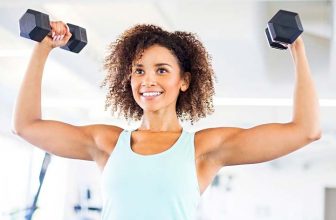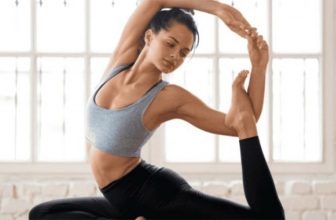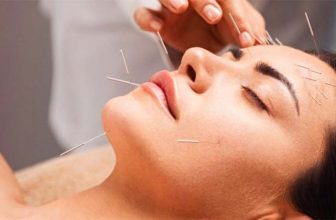
Planks are an ideal exercise for your abdominal muscles because they engage and strengthen all of your core’s muscles. These will help you keep fit by giving you toned abs, improved balance, posture and flexibility. Read on for our Top 5 Plank Exercises for Abs!
The four main abdominal muscles are:
• Transverse Abdominis (front and side muscles)
• Rectus Abdominis (located along the front of the abdomen, often referred to as the 6 pack)
• Internal Abdominal Obliques (located on the side and front of the abdomen, lies under the external oblique)
• External Abdominal Obliques (located on the side and front of the abdomen, the outermost muscle layer)
You may think getting into the proper form of a plank is straightforward, but many people have poor form and this can cause injury or strain to muscles. Holding the position takes a fair amount of strength and endurance in your abs.
1. Holding a Plank
Tips:
You can hold a plank either on the forearm, or hands, on the knees or the feet depending on the level of difficulty you are looking for.
If you are on your hands in this position, do not lock the arms and keep a slight softness in the elbows.
Holding a plank may look rather simple, but it’s so effective in working the abs that you can really feel its effect; you’ll note it’s a difficult move to maintain for a significant period of time! In gym classes we hold this position for at least a minute at a time repeating it several times throughout each class.
Anatomy:
Whilst holding a plank position, the abdominal muscles are part of the total core being worked. The Rectus Abdominis (6 pack muscles) and the internal and external obliques are engaged to support the body. The deeper abdominal muscles, including the Transverse Abdominus, also work hard to keep the body steady.
2. Side plank
Tips:
A variation or progression of this move:
Lift onto the hand from a forearm.
Move the hips up and down to demand more from the obliques.
Stack the legs rather than have them staggered (as in the videos).
In the side plank you can really feel the sides of the body work to stabilise you in this straight position, keeping you from gravity’s natural pull, together with the front abdominal muscles working to keep your back aligned.
Anatomy:
This exercise particularly works the obliques and Transverse Abdominis whilst also using the Rectus Abdominis. When holding this posture, the obliques work to rotate and control whilst the Transverse Abdominis stabilises the torso, the Rectus Abdominus works to flex the spine forward, left and right.
Twisting/Rolling side plank
Whilst rolling, we can see that the obliques and the transverse abdominus have to work hard to control the rotating movement, whilst the rectus abdominis works to stabilise and aid the process.
3. Leg lift in a plank
Leg lift, forearm plank, leg lifts, knee lifts, side plank (example of legs stacked not staggered)
Plank with Knee Taps to the Floor
Plank Knee in, Side to Elbow
Tips:
Other variations or progressions of this move:
Have one arm held out stretched ahead, with one leg out slightly stretched behind.
Plank tap feet, march the feet up and down.
March feet out and in, a few inches out to the side.
All of the movements should not show any rocking or swaying of the hips! Keep a stable solid plank. These are very demanding or advanced moves, the difficulty is in really keeping correct form. Focus on not twisting or rotating the hips, doing your best to keep your body solid whilst only the leg or arm moves.
Anatomy:
The muscles used in this exercise are the abdominals, along with major assistance from the obliques, along with use of the hip flexors. The abdominals here provide movement and support to your core and back, whilst the obliques are essential for side bending and waist movement.
With the movement of lifting a leg in a plank, your body requires more strength and demand at this moment from either the right or left sides of abs and obliques, to stabilise and maintain the plank hold.
4. Arm lift in a plank (Plank tap)
Tips:
It’s so easy to swing the body and have the hips moving all over the place, for proper technique focus on a maintaining a solid plank hold whilst moving the arm .
Anatomy:
Similar to the leg lift, the abs and obliques work strongly here; with the movement of lifting an arm in a plank, your body requires more strength and demand at this moment from either the right or left side of abs and obliques, to stabilise the plank hold.
5. Rock forwards in plank (See Saw plank)
Tips:
This can be done on the forearms or on the hands.
It is surprising how the small movement of rocking even an inch backwards and forwards makes you feel, rather challenged! You will really begin to feel the burn as a great demand is placed on each of the abs as they work to stabilise you through the movement.
Keep yourself in great form whilst moving.
Anatomy:
Whilst working all core muscles, within the movement of rocking back and forward in the plank, more strength and demand is put on certain abdominal muscles at a time, to keep your body’s position. The forward movement may make you feel more use of the lower abs and obliques to help stabilise the posture, whilst you may feel the backward movement uses more of your upper abs and obliques.
Planks, with their infinite variations and progressions are so effective for building a strong core and abs. They are simple movements that anyone can try and can apply in countless situations; in the real world, in real life at home (eg. getting up off the floor) at the gym, or outdoors. As a beginner, even a small amount of time holding each of these positions will really test you and build useful, coordinated isometric (muscle tensing) strength in a way that external weights cannot. Give these planks a go, and see how they help build you a great, yet functional core and given a little time, develop and reveal your washboard abs! Got something to share about planking? Tell us below or @ KeepfitKingdom !









